ANSI Z358.1
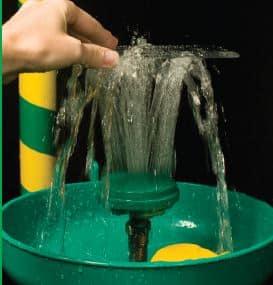
ANSI Z358.1
The Beginner’s Guide to Eyewash Testing Gauges
The ANSI Z358.1 Standard states that to determine a suitable eyewash pattern, the eyewash testing gauge should be a minimum of 4 inches in length with two sets of parallel lines equidistant from the center. The interior of the lines should be 3.25 inches apart. (Section 5.1.8) 1. Activate the eye/face wash. Note: If the eye/face wash […]

ANSI Z358.1
OSHA Fine For Lack of Proper Eyewash Equipment
February 8, 2014 A mining company was fined by OSHA totaling $5,776. In their inspection, they found that employees were exposed to fire hazards and risk of eye injuries. “The second violation designated as serious states that employees were at risk of eye injuries while handling corrosive chemicals, such as hydrated lime, copper sulfate and sodium hydroxide, […]
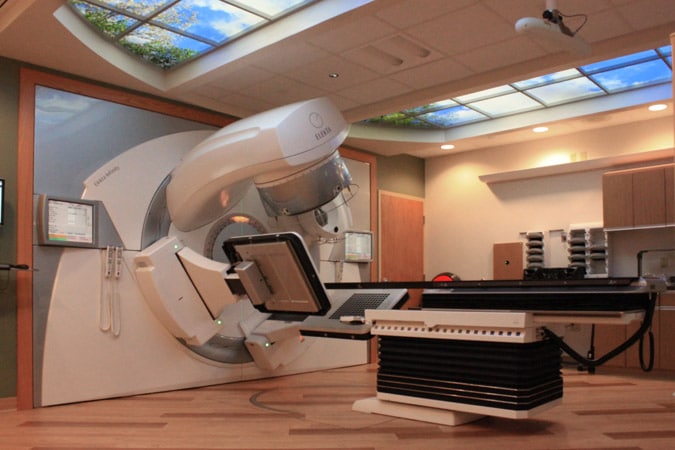
ANSI Z358.1 | Safety
Case Study: Hospital Safety Upgrades Match Commitment to Health Enhancement
For more than a century, Monongahela Valley Hospital (MVH) has served Pennsylvania’s mid-Monongahela Valley with an emphasis on quality care and compassionate caring. The 226-bed, full-service health care facility maintains a staff of more than 1,000, making it the largest employer in the valley. The hospital remains steadfast in its commitment to meeting the needs of not only […]

ANSI Z358.1 | Safety
Safety Tip: The Importance of Tempered Water for Victim Comfort
In the morning before hopping into the shower, you may overestimate how low your body temperature is and turn the shower dial to the hottest that it will reach. You then step your entire body into the water and react to the scalding hot water by stepping away from the water, and turning the dial […]
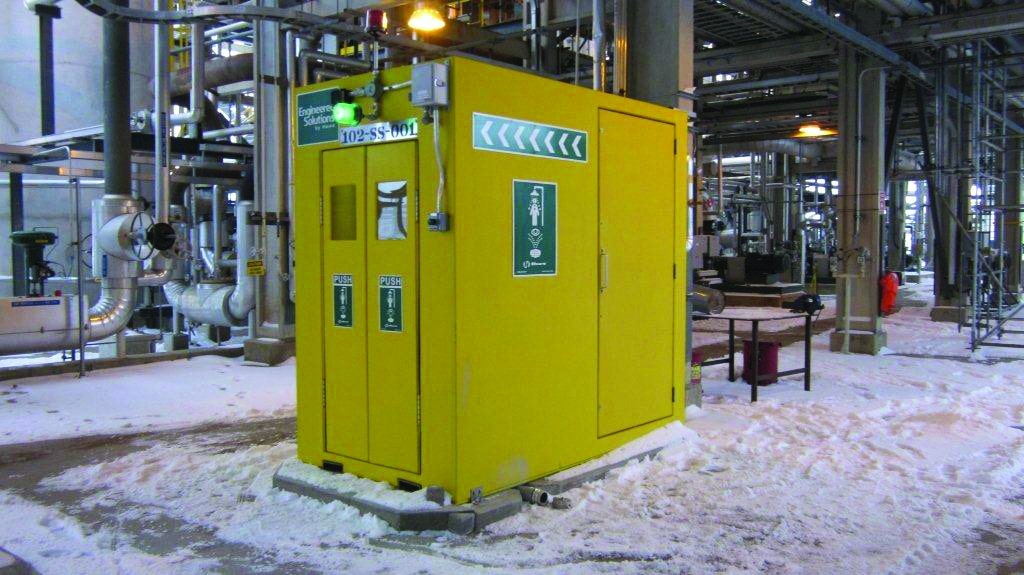
ANSI Z358.1 | Safety
Safety Tip: Product Suitability
Is your facility in need for new emergency equipment? Before investing the time and money in buying new equipment, it is critical that the correct product is sought after. Perhaps you work at a chemical plant and the risk of hazardous chemicals to be splashed in the facial area is high. The best solution in this case is an […]
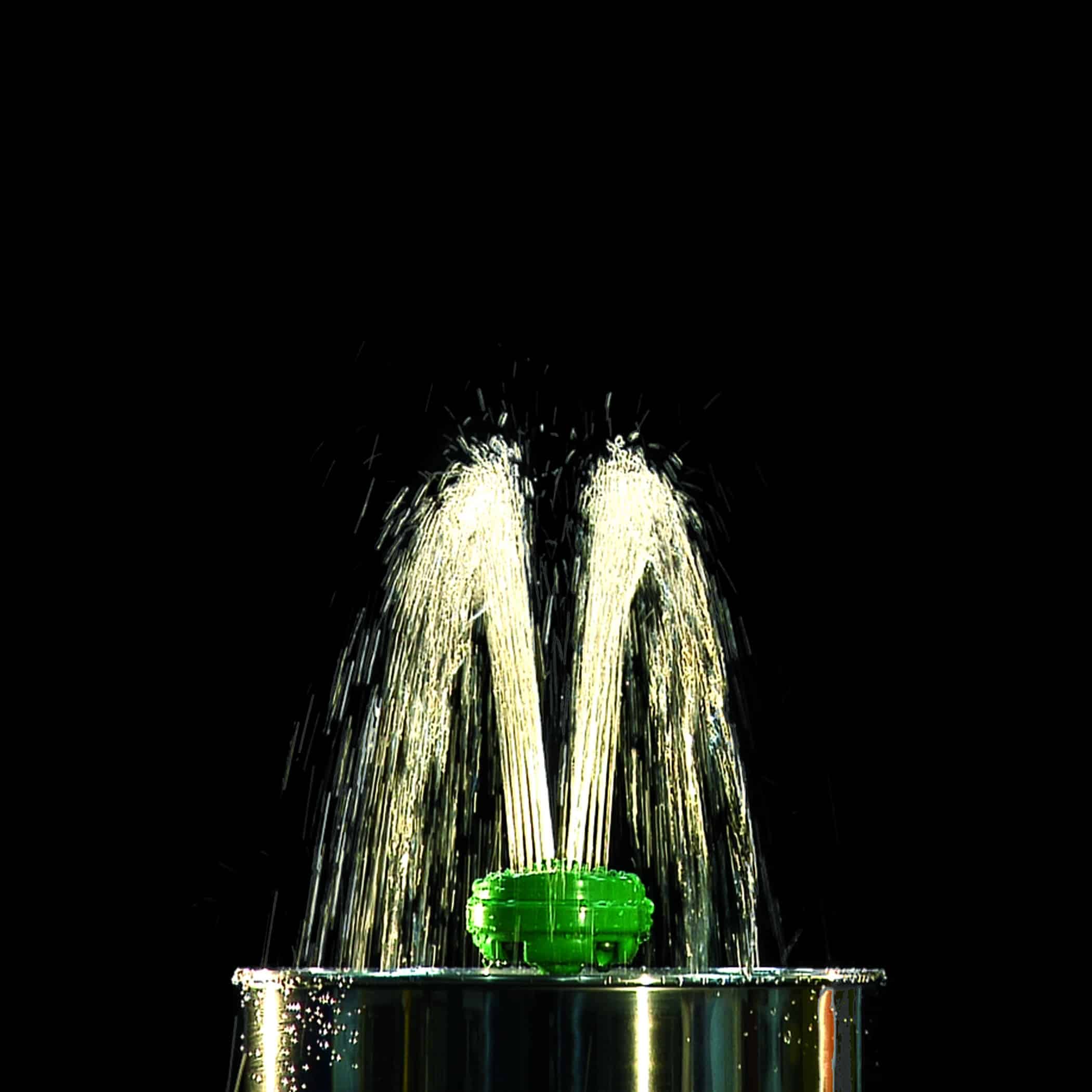
ANSI Z358.1 | Safety
Helping avoid unnecessary OSHA fines
In June of this year, an insulation plant in Phenix City, Alabama was fined $27,500 by OSHA solely for not having a sufficient place, such as a wash station or shower, to flush fluids from the body in an emergency. In this case, the plant had been cited previously, which resulted in the large fines they […]
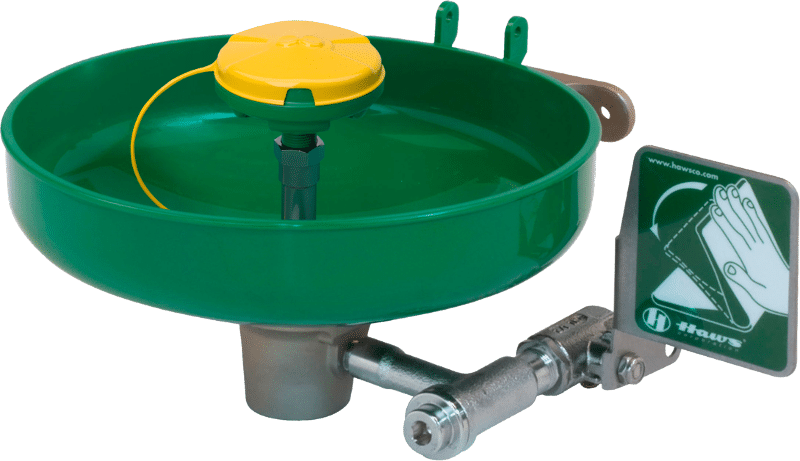
ANSI Z358.1 | Safety
Exceeding ANSI Standards: Color Coding
Does your facility use the proper universal color coding to alert potential danger? As referenced in a recent Haws® White Paper, Emergency Response Best Practices: Exceeding the ANSI Z358.1 Standard, OSHA enforces that potential danger must be made obvious to give attention to the risk of potential danger. Color coding creates a universal language to […]
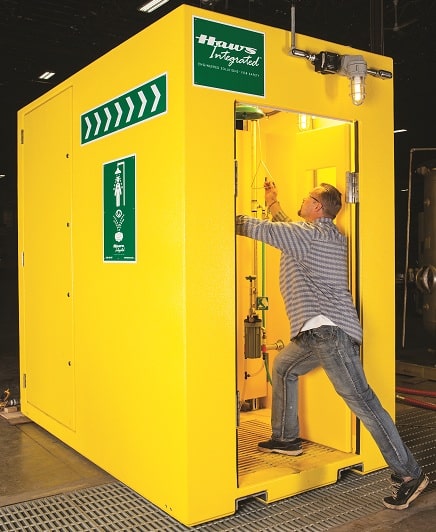
ANSI Z358.1 | Safety
Industrial Insulation Company Cited $40k for Serious Hazards
We frequently hear comments from safety professionals that showers and eyewashes are rarely used and in turn they receive little attention. Yet, small overlooks can lead to large repercussions that can affect a company financially. Recently, a company was fined over $25,000 for safety violations including not providing the appropriate emergency eyewashes and showers at a plant that works with caustic chemicals. […]
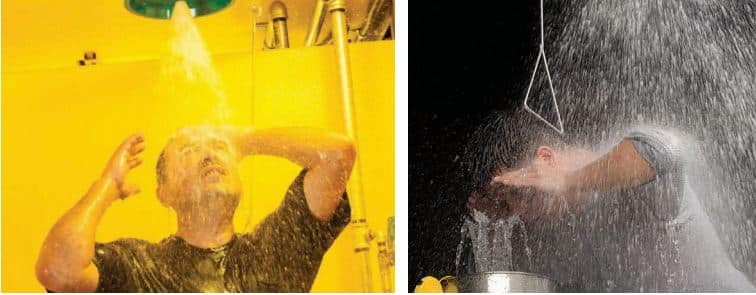
ANSI Z358.1 | Safety
27,450 Workplace Eye Injuries in Just 1 Year
There were 27,450 workplace non-fatal eye injuries that resulted in days out of work reported in the U.S. in 2008, according to the U.S. Department of Labor Bureau of Labor Statistics. Of those, about 10% were from chemical burns. There were undoubtedly many more exposure injuries that did not result in days of lost work, […]
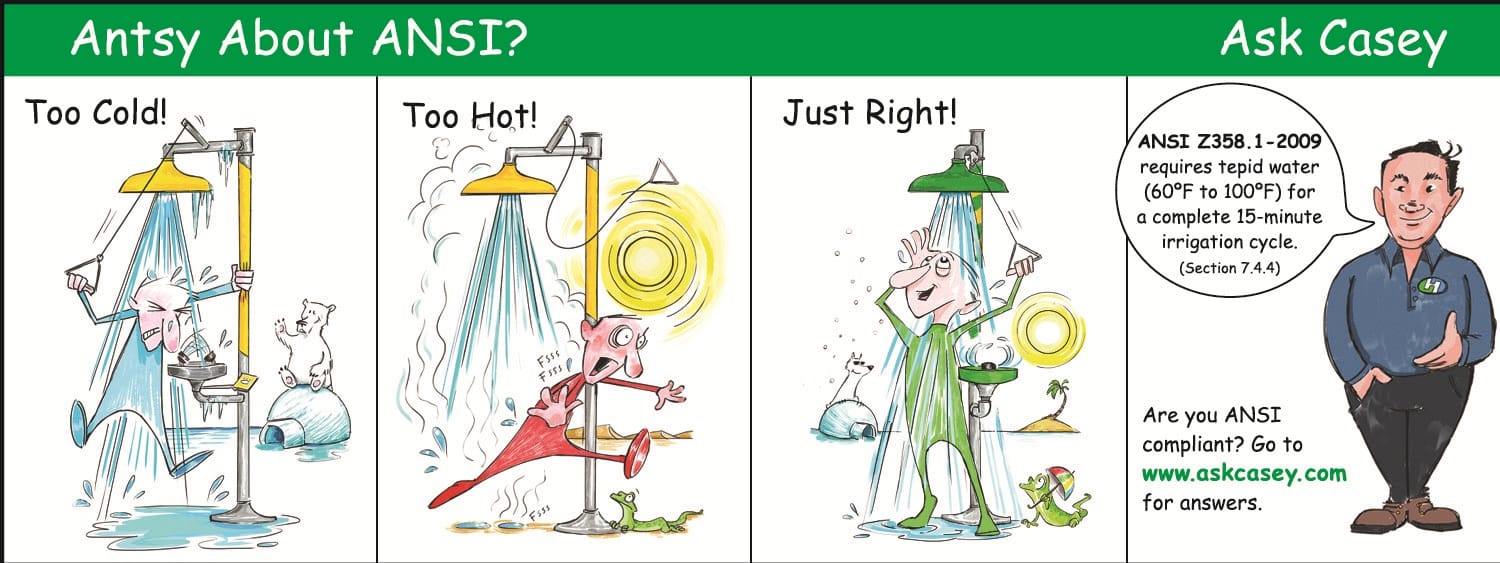
ANSI Z358.1
Antsy About ANSI?
Specific conditions in cold-weather climates can increase the risk of cold-temp related injuries, including hypothermia, which can affect a person even when land temperatures are above freezing or water temperatures are below 98.6°F/37°C. While the ANSI Z358.1 Standard outlines suitable water temperatures as tepid – with a defined range of 60 to 100°F/15.5 to 37.77°C – and requires […]



